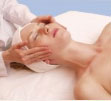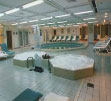
Spa History
Origin of the word spa
The word “spa” may be came from the Walloon word “espa” meaning fountain. This, in turn, came from the name of the Belgian town Spa, where in the 14th century a curative, thermal spring was discovered. Spa may also originate from the Latin word “spagere” or may be an acronym of the Latin phrase “sanitas per aquas.
Greece and the Roman empire
The Greeks, the Romans built their own thermal baths at mineral and thermal springs. A military presence was often the key to development of such a spa resort. Spas served not only for recuperation of wounded soldiers but also as rest and recreation centres for healthy soldiers. In contrast with the Greeks, who took the waters after intensive physical exercises, the Romans considered the baths more important than the gymnastics alone. Besides cleansing, exercises, socialising, relaxation, and worship, medical treatment was also applied extensively. Spa treatment consisted of application of water to afflicted parts of the body, immersion of the whole body in the water (especially for rheumatic and urogenital diseases), and drinking excessive quantities of water.
Spas In Middle ages
With the fall of the Roman Empire in 476 and the rise of Christianity, the bathing culture fell into disrepute and bathing was officially prohibited. Faith in cure through worship and praying was regarded as more important than amedicinal bath. Baths were redeveloped as churches, although some remained available for the aristocrats who were not affected by the church’s decrees. The aversion to bathing remained for many centuries. People abstained from bathing as long as possible, sometimes for years.
From the 13th century onwards, baths gradually came into re-use, particularly in southern Europe under the influence of the Moors. Public baths were rebuilt and the entrance was usually free. The baths were often crowded and people bathed for hours, sometimes days in the same bath. Blood letting, enemas, and drinking cures were prescribed, although relaxation and pleasure were most often the reasons for bathing.
Spas In the 16th century
In the 16th century the image of the public baths again deteriorated in many countries, which led to the closure of many public baths. They were considered to be a source of contagious diseases such as syphilis, plague, and leprosy, and the baths became dangerous meeting places for political and religious dissidents. In addition, owing to a shortage of firewood, public baths became more expensive for a population that had already become impoverished by many wars.
Spas In the 18th century
In the 18th century the development of medicine facilitated the analysis on water composition and guaranteed a scientific approach to the spa therapies.
Spas In the 19th and 20th century
Around 1800 interest in the bathing culture grew. Further attempts to analyse the mineral water were made, aiming at improving its use in medicine, and at preparing mixtures of water identical to those mineral waters famous for their curative properties. Doctors were convinced that for each disease Mother Nature possessed an appropriate medicinal spring, which could be discovered through chemical analysis of the waters. Priessnitz and Kneipp further developed the principles of balneotherapy and hydrotherapy.
The fruition of spas was reserved to the privileged social class and only later this phenomenon extended to other classes too.
Current Spa
Nowadays Spas are the ideal place where to find a complete wellness sensation and where to be healed with many natural therapies,so now, with a modern twist, spas still bring about renewal and well-being, as well as allowing you to relax, reflect, revitalise, and rejoice. May you do so with us at Kimi Ora Health Spa.
Conclusion
Throughout the ages the interest in the use of water in medicine has fluctuated from century to century and from nation to nation. The world has viewed it with different opinions, from very enthusiastic to extremely critical, and from beneficial to harmful. Today, spa therapy is receiving renewed attention from many medical specialties and health tourists, and having a revival. However, the exact therapeutic potential of spa therapy still remains largely unknown. Better and more profound scientific evidence for its efficacy is therefore warranted, in particular for its effects on the musculoskeletal system.








